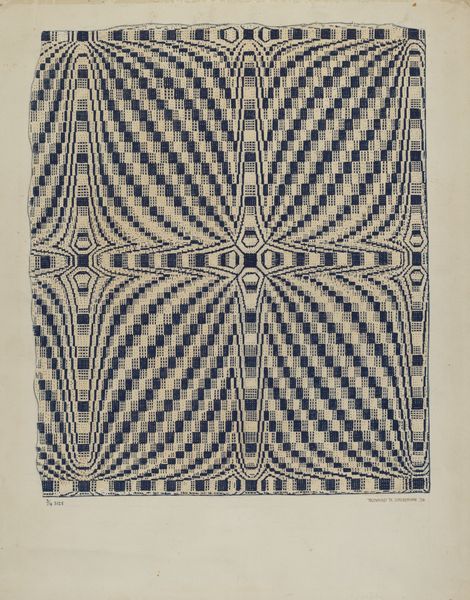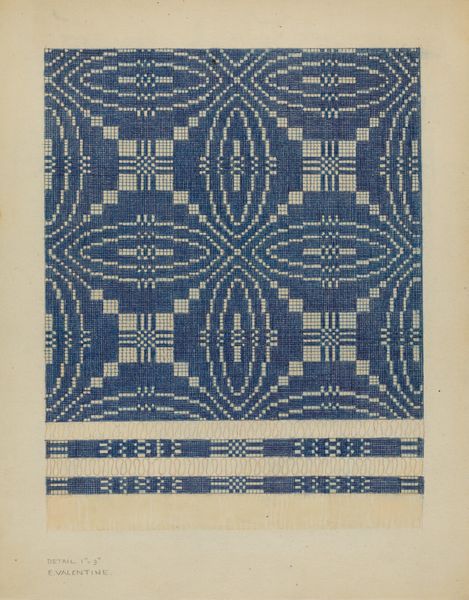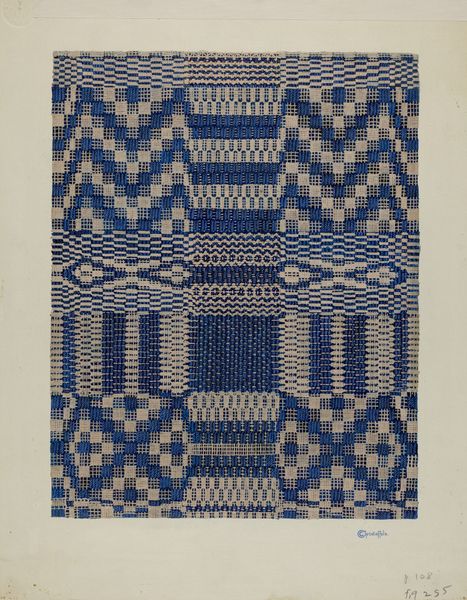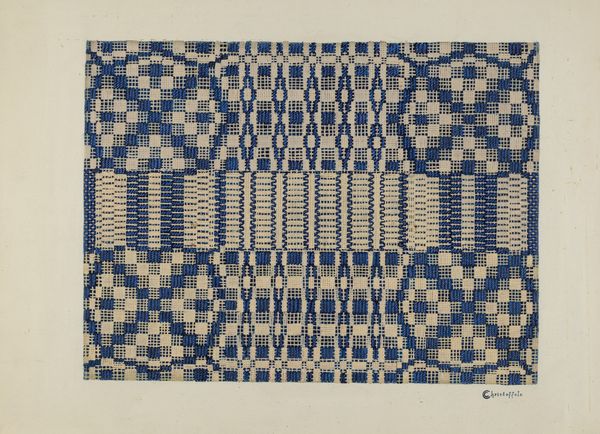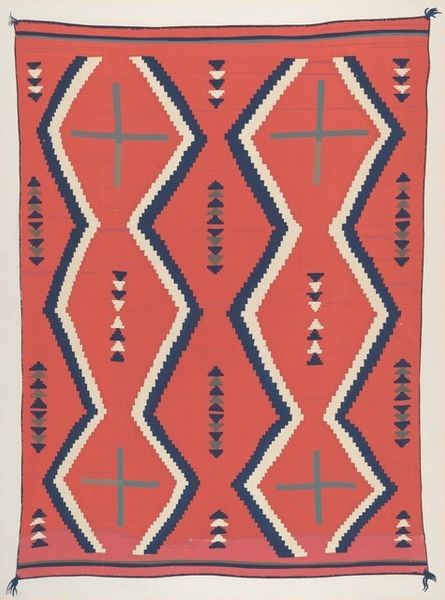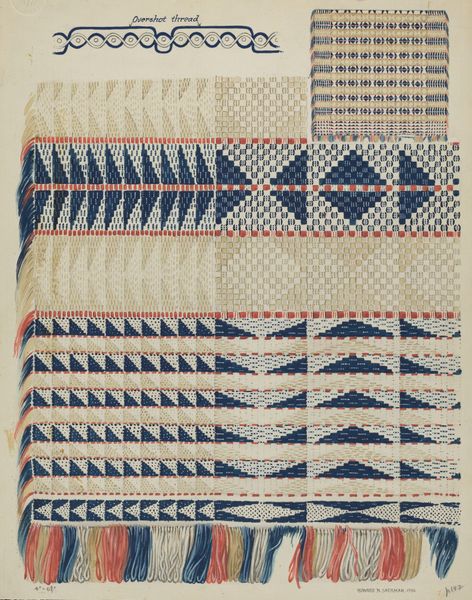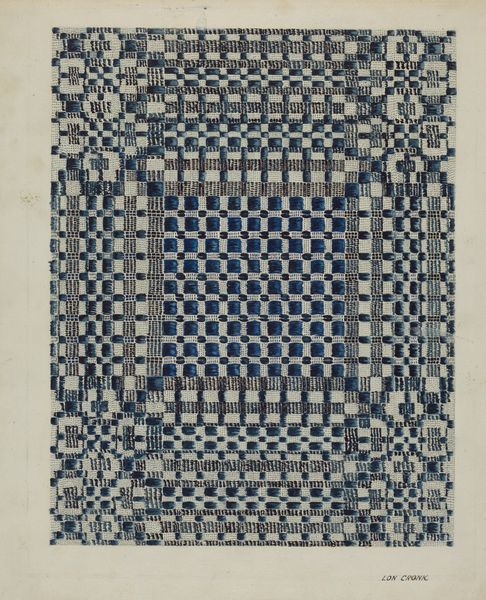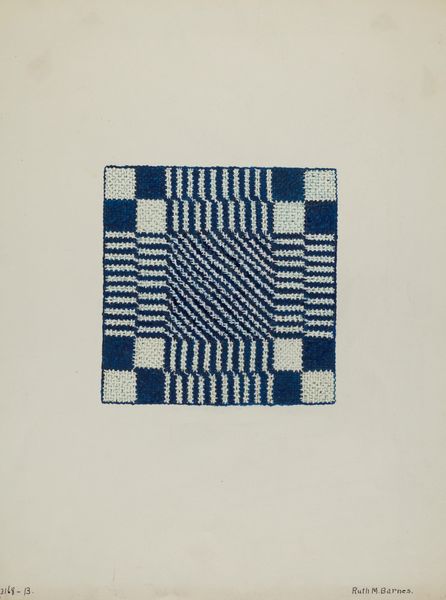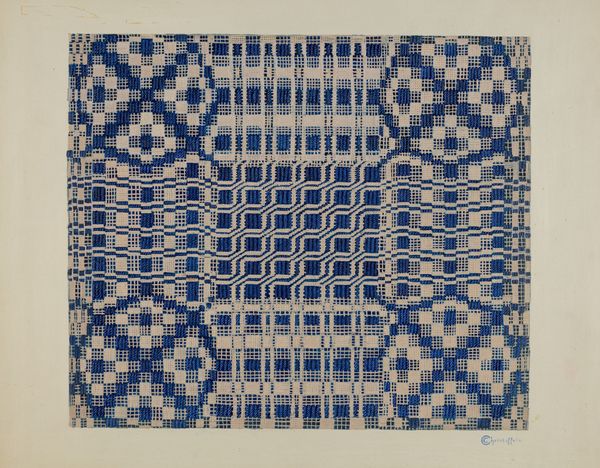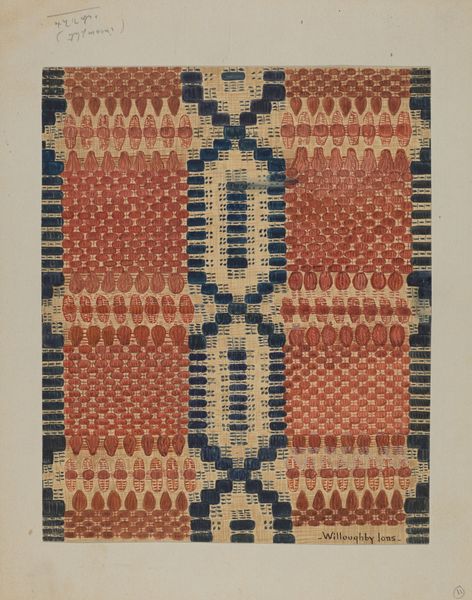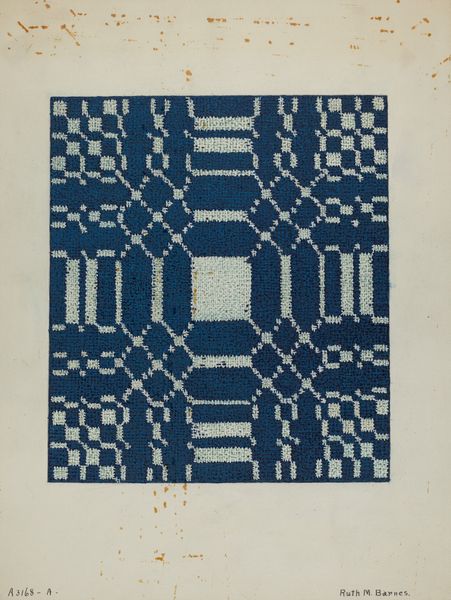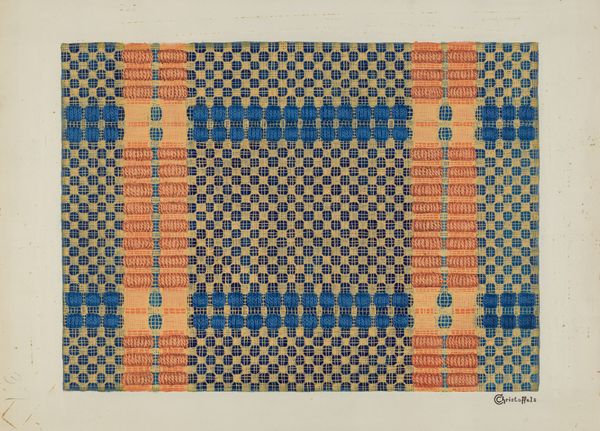
weaving, textile
#
weaving
#
textile
#
geometric pattern
#
geometric
#
vertical pattern
#
pattern repetition
#
imprinted textile
Dimensions: overall: 56.1 x 41.5 cm (22 1/16 x 16 5/16 in.) Original IAD Object: 72" wide; 82" long
Copyright: National Gallery of Art: CC0 1.0
Editor: Here we have a "Coverlet," made around 1937. It's a textile piece, showcasing an intricate woven pattern. It's really striking how the geometric designs create a sense of both order and visual movement. What do you make of the symbolism embedded in these kinds of works? Curator: Well, consider how textiles, particularly something like a coverlet, serve as a sort of cultural memory. The geometric patterns aren't merely decorative. We could explore if they reference particular traditions, perhaps linked to family history or community identity? Editor: That’s a great point, like coded stories stitched in! The repetition almost feels like a meditative practice, for the maker and maybe even the viewer. Curator: Exactly. Think about the act of weaving itself—the rhythmic interlacing of threads. Doesn’t that imply a connection to time, patience, and the cyclical nature of life? The symbolic weight builds with each repetition. What feelings are evoked by these images? Editor: A comforting sense of order and tradition but, at the same time, an understated dynamism with how it plays with the eye. It feels so carefully composed and intentional. Curator: And the choice of color, the texture of the textile… all contribute. This isn’t just a functional object. It's a layered expression, resonating with the cultural and personal identity of its creator and intended user. Editor: It’s amazing to think about all those potential layers. I'll definitely see textiles differently from now on. Thanks for your insights! Curator: My pleasure. Looking through a symbolic lens adds new dimension, doesn't it? It helps us unravel the hidden narratives within these woven forms.
Comments
No comments
Be the first to comment and join the conversation on the ultimate creative platform.
